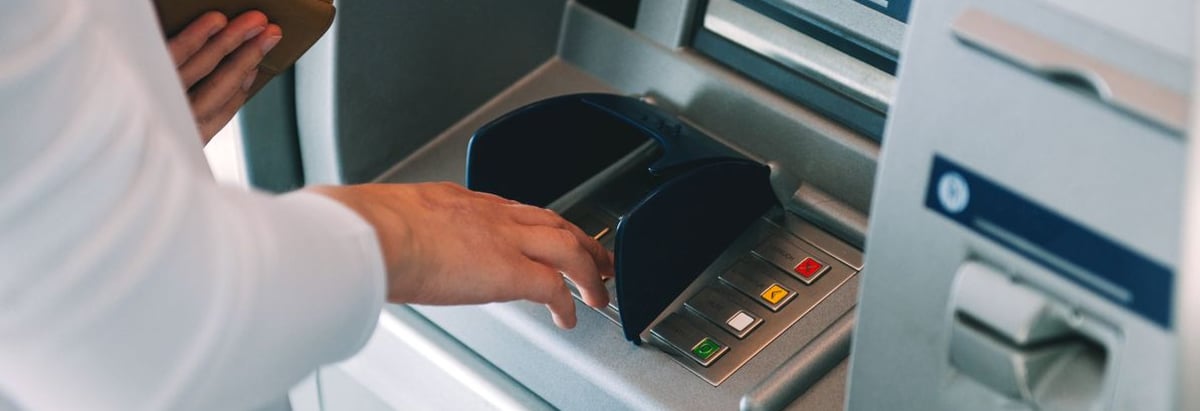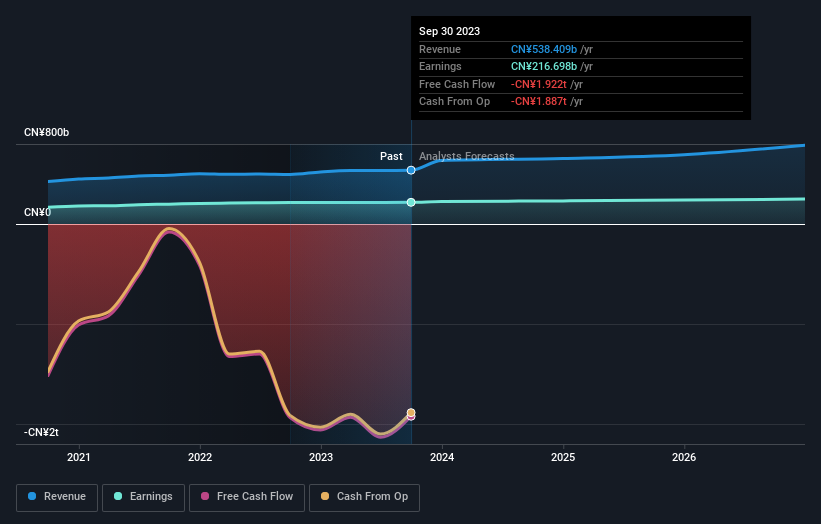While individual investors own 24% of Bank of China Limited (HKG:3988), sovereign wealth funds are its largest shareholders with 64% ownership

Key Insights
- Significant control over Bank of China by sovereign wealth funds implies that the general public has more power to influence management and governance-related decisions
- 64% of the company is held by a single shareholder (Central Huijin Investment Ltd.)
- 12% of Bank of China is held by Institutions
To get a sense of who is truly in control of Bank of China Limited (HKG:3988), it is important to understand the ownership structure of the business. With 64% stake, sovereign wealth funds possess the maximum shares in the company. Put another way, the group faces the maximum upside potential (or downside risk).
And individual investors on the other hand have a 24% ownership in the company.
In the chart below, we zoom in on the different ownership groups of Bank of China.
See our latest analysis for Bank of China

What Does The Institutional Ownership Tell Us About Bank of China?
Institutions typically measure themselves against a benchmark when reporting to their own investors, so they often become more enthusiastic about a stock once it's included in a major index. We would expect most companies to have some institutions on the register, especially if they are growing.
We can see that Bank of China does have institutional investors; and they hold a good portion of the company's stock. This suggests some credibility amongst professional investors. But we can't rely on that fact alone since institutions make bad investments sometimes, just like everyone does. It is not uncommon to see a big share price drop if two large institutional investors try to sell out of a stock at the same time. So it is worth checking the past earnings trajectory of Bank of China, (below). Of course, keep in mind that there are other factors to consider, too.

Bank of China is not owned by hedge funds. The company's largest shareholder is Central Huijin Investment Ltd., with ownership of 64%. This implies that they have majority interest control of the future of the company. For context, the second largest shareholder holds about 2.7% of the shares outstanding, followed by an ownership of 1.6% by the third-largest shareholder.
While it makes sense to study institutional ownership data for a company, it also makes sense to study analyst sentiments to know which way the wind is blowing. Quite a few analysts cover the stock, so you could look into forecast growth quite easily.
Insider Ownership Of Bank of China
The definition of an insider can differ slightly between different countries, but members of the board of directors always count. Management ultimately answers to the board. However, it is not uncommon for managers to be executive board members, especially if they are a founder or the CEO.
Insider ownership is positive when it signals leadership are thinking like the true owners of the company. However, high insider ownership can also give immense power to a small group within the company. This can be negative in some circumstances.
We note our data does not show any board members holding shares, personally. We do not see this low level of ownership often, and it is possible our data is imperfect. But shareholders can click here to check if insiders have been selling stock.
General Public Ownership
The general public, who are usually individual investors, hold a 24% stake in Bank of China. This size of ownership, while considerable, may not be enough to change company policy if the decision is not in sync with other large shareholders.
Next Steps:
It's always worth thinking about the different groups who own shares in a company. But to understand Bank of China better, we need to consider many other factors.
I always like to check for a history of revenue growth. You can too, by accessing this free chart of historic revenue and earnings in this detailed graph.
If you are like me, you may want to think about whether this company will grow or shrink. Luckily, you can check this free report showing analyst forecasts for its future.
NB: Figures in this article are calculated using data from the last twelve months, which refer to the 12-month period ending on the last date of the month the financial statement is dated. This may not be consistent with full year annual report figures.
Valuation is complex, but we're here to simplify it.
Discover if Bank of China might be undervalued or overvalued with our detailed analysis, featuring fair value estimates, potential risks, dividends, insider trades, and its financial condition.
Access Free AnalysisHave feedback on this article? Concerned about the content? Get in touch with us directly. Alternatively, email editorial-team (at) simplywallst.com.
This article by Simply Wall St is general in nature. We provide commentary based on historical data and analyst forecasts only using an unbiased methodology and our articles are not intended to be financial advice. It does not constitute a recommendation to buy or sell any stock, and does not take account of your objectives, or your financial situation. We aim to bring you long-term focused analysis driven by fundamental data. Note that our analysis may not factor in the latest price-sensitive company announcements or qualitative material. Simply Wall St has no position in any stocks mentioned.
About SEHK:3988
Bank of China
Provides various banking and financial services in Chinese Mainland, Hong Kong, Macao, Taiwan, and internationally.
Flawless balance sheet established dividend payer.

